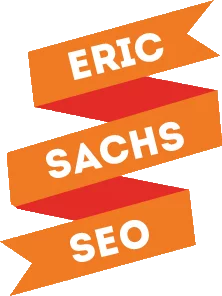There’s no doubt about it. Facebook is a pay-to-play platform when it comes to advertising your business. Organic reach is at an all-time low and only those who are spending at least a little bit of money are gaining real traction and visibility.
If you have a tight budget, that’s a problem. Even the littlest mistake can destroy your reach and waste your budget. To help you avoid hitting those pitfalls, here are a few specifics to watch out for.
A Lack of Strategy
This is a major problem, especially among newer Facebook advertisers. To be successful on Facebook, you simply must have a clearly defined strategy. You need to understand your goals and objectives and you must be prepared with a plan as to how and when you will assess your analytics.
What are you really trying to accomplish? Do you want engagement on your page, traffic to your website, app downloads or warm leads? Choose one objective at a time.
Audience vs Offer
Another huge problem I see when assessing Facebook ads is targeted audience misalignment. As a business owner, you need to experiment with different offers, but that new offer may also appeal to a new demographic. You can’t automatically assume the audience you’ve been targeting will love your new deal. Experiment by testing different audiences (try A/B split testing) to see which respond better so you can direct your budget accordingly.
Adjusting the Audience Size
In Facebook marketing, audience size matters. If the audience is too small, you won’t reach enough people to make an impact. Too large and you’ll end up with a lot of unqualified or poorly targeted leads. You’re going to have to experiment with your interest targeting to find the perfect middle-ground – the place where you are reaching a steady number of people who are truly interested in your niche. Aim for anywhere between 500,000 to 2,000,000, based on the size of your budget.
Ignoring Video
Hey, look…I get it. Creating video ads isn’t really easy. It’s time consuming and can be costly if you don’t have the in-house tools or expertise to get the job done.
That said, video is huge right now. It stands out prominently in a sea of content. The more creative you are in the first few seconds, the higher your odds of a person watching through to the end. Make your videos a part of your ad campaign and watch your numbers soar.
Set It and Forget It
You absolutely can not set up an ad and let it run its course without checking on it. That just isn’t how strategy, analytics, and adjustments work. You need to check in on your ad on a daily basis to make sure you are having an impact. It’s completely acceptable to make adjustments to your targeting mid campaign, especially if you aren’t seeing the results you were hoping for. Don’t think the ad is doing well at all? Shut it off and start again. Don’t let your ad spend run out.
Fans vs Non-Fans
Want to grow your audience and turn cold leads into warm leads via relationship building? Target your ads to non-fans so you can increase overall engagement over time. Want to convert sales? Target your sales-based ads to the people who are already fans of your page. They’re the ones who have already shown interest and are more likely to make a buying decision on the spot. You’ve worked hard to make them familiar with your brand, so they’re the ones most likely to convert.
Limiting Your Images
Facebook allows you to upload more than one image to an ad for a reason. The platform is designed to assess which of your ad images is doing best, automatically directing more of your budget to the one(s) getting the best engagement. Uploading only one image is a huge waste of your time and money. Upload at least three or four and allow the system to do the testing for you.
Text on Ad Images
Speaking of images, remember the 20 percent rule? Facebook used to disallow any ad that had text over more than 20 percent of the image area. The rules have relaxed a bit, but ads with more than the set amount of text still don’t perform as well as those that adhere to the rule. Use the text overlay tool to keep your text area as low as possible. Your ads will spend a lot better.
Multiple Campaign Audiences
Are you running more than one campaign at a time? If so, you need to make sure you’re using completely different audiences for each campaign. Even if both ads would appeal to the same audience, running them both at the same time, targeted to the same audience, means you are competing with yourself. You end up driving up costs and, in many cases, your ads will completely underperform. If you’re lucky, they won’t deliver and waste your spend at all. Always target different audiences when running more than one campaign.
Ad Fatigue
The more people see your ads, the more tired of them they become. The last thing you want is for people to start clicking through to hide your ads. Customize your ad audiences so that people who enter your sales funnel become excluded from your campaigns. Not that sophisticated yet? Edit your reach objective so that the frequency of your ad is limited to a small number of impressions in a set time period.
Don’t listen to anyone who tells you Facebook advertising is a waste of money. Marketing is a part of business and the online world is growing. Experiment and pay attention to your ad sets as they run. Your images and audience targeting skills will make a huge difference, and the analytics won’t lie when it comes time to assess your results. A few simple adjustments could make a huge difference when it comes to how far you are ultimately able to stretch your budget.
